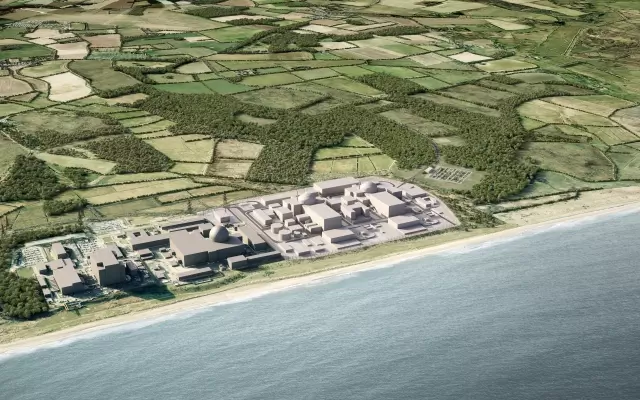A new report from the para-governmental body for oversight of the world’s energy has re-ignited the debate over the planet’s – and Britain’s – dependence on nuclear energy.
“Extending nuclear plants’ lifetimes is an indispensable part of a cost-effective path to Net Zero by 2050,” is among conclusions of the International Energy Agency’s latest study on the sector, “Nuclear Power and Secure Energy Transitions”
With a combined output potential of 6.9GW, the UK has six ageing nuclear power stations now providing around 16% of the country’s electricity. Three of them, totalling 3.2 GW, will retire by March 2024. All but one will stop spinning by 2028.
The Johnson administration’s Energy Security Review in May foresees a barely credible schedule of one new nuclear plant beginning construction every year until the end of this decade, in quest of 95% of electricity being low in carbon by 2030.
With its escalating bill for construction now topping £ 26 billion, EDF and CGN’s Hinkley Point C venture may contribute 3.2 GW if it starts operations as planned in June 2027.
By early next month, ministers in D-BEIS are expected to issue development consent for its twin at Sizewell C, pictured, in Suffolk.
With a global focus running to mid-century, the IEA’s analysis recommends the planet’s nuclear generating capacity must double to 812 GW by 2050, if the world is to purge power of all carbon.
That would entail, the report says, global annual investment in nuclear rising to $100 billion per year by 2030.
Without new construction and life extensions, the study prophesies plant retirements will see nuclear’s share of global electricity fall from 10% today worldwide, to 3% in 2050.
In Britain the Nuclear Industry Association’s chief executive Tom Greatorex welcomed the IEA study.
“This report shows that we need to build fleets of new reactors and get the most of our existing stations to hit net zero with our energy security intact, “ observed Greatorex, a former Labour front-bench energy spokesperson.
“In the UK, that means green labelling nuclea,, getting on with Sizewell C, and mobilising investment in other large and small-scale projects as soon as possible.
“We should aim to restore UK and G7 market leadership in nuclear, and make our sovereign industrial capabilities once again the envy of the world,” said Greatorex.
Mini-nukes under 500 MW, such as Rolls Royce’s adapation of submarine power plants, have been mooted for Trawsfynydd and Wylfa Newydd in north Wales. The manufacturer says securing £85 million from Qatar’s sovereign wealth fund leaves its ambitions fully funded.
The Nuclear-Free Local Authorities alliance of around 50 councils is among opponents to nuclear expansion in the UK.
Presenting a petition claimed to include 30,000 signatures, this week the NFLA alleged a ‘lack of scientific rigour’ by expert witnesses acting for the waste disposal division of regulator the Nuclear Decommissioning Authority.
The body is seeking planning permission for a subterranean waste dump either onshore under Allerton or Copeland, or beneath the seabed up to 22 kilometres off the Cumbrian coast.





It looks as if we’re going to get eco-destructive onshore wind forced upon us by one means or another. And yet, if we can wait just a few years, how so much better it will be for the environment, when the era of the small modular reactor (SMR) dawns.
GE Hitachi’s BWR-300’s commercial operation date (COD) 2028; Rolls-Royce SMR Ltd’s UK SMR’s COD 2029.
It would take 6.4 South Kyle-sized onshore wind farms to generate the same amount of electricity each year as a single UK SMR. They would occupy a land area of 155 km², compared to the 0.04 km² site size of the UK SMR (1/3875th).
But the lifespan of wind farms is only 25 years, whereas the design life of an SMR is 60 years. Those 6.4 South Kyle-sized wind farms would have to be ‘rebuilt’ 2.4X – a total of 15 South Kyle-sized wind farms. The capital markets would have to come up with £4.8 billion of investment for the wind farms, compared with just £1.8 billion of investment for the R-R UK SMR.
The super-investability of the UK SMRs will hit investors in the face within a year or two and it is not unrealistic to think that by the end of this decade, SMRs will syphon investment away from dysfunctional wind and solar power plants (WASPPs) when the higher returns become obvious.
ESG credentials will start to kick in, centred on the microscopic environmental impact of SMRs compared to eco-destructiveness of any of the WASPP technologies.